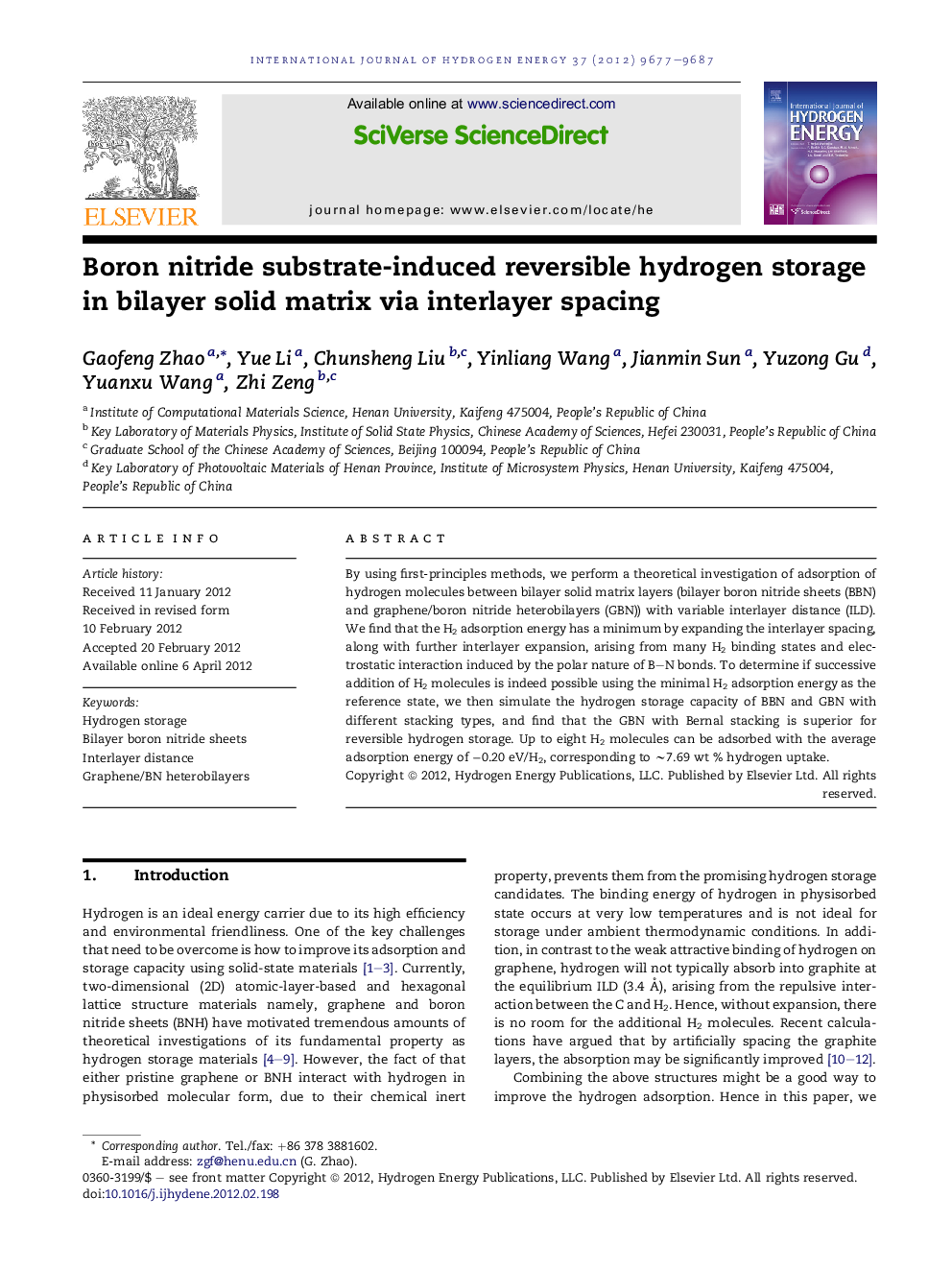| Article ID | Journal | Published Year | Pages | File Type |
|---|---|---|---|---|
| 1271281 | International Journal of Hydrogen Energy | 2012 | 11 Pages |
By using first-principles methods, we perform a theoretical investigation of adsorption of hydrogen molecules between bilayer solid matrix layers (bilayer boron nitride sheets (BBN) and graphene/boron nitride heterobilayers (GBN)) with variable interlayer distance (ILD). We find that the H2 adsorption energy has a minimum by expanding the interlayer spacing, along with further interlayer expansion, arising from many H2 binding states and electrostatic interaction induced by the polar nature of B–N bonds. To determine if successive addition of H2 molecules is indeed possible using the minimal H2 adsorption energy as the reference state, we then simulate the hydrogen storage capacity of BBN and GBN with different stacking types, and find that the GBN with Bernal stacking is superior for reversible hydrogen storage. Up to eight H2 molecules can be adsorbed with the average adsorption energy of −0.20 eV/H2, corresponding to ∼7.69 wt % hydrogen uptake.
► Effect of bilayer solid matrix interlayer spacing on hydrogen storage. ► H2 adsorption energy has a minimum by expanding the interlayer spacing. ► Graphene/BN heterobilayers (Bernal stacking) is superior for hydrogen storage. ► Eight H2 molecules adsorb on graphene/BN heterobilayers (Bernal stacking). ► Average adsorption energy of −0.20 eV/H2, hydrogen uptake of ∼7.69 wt %.
